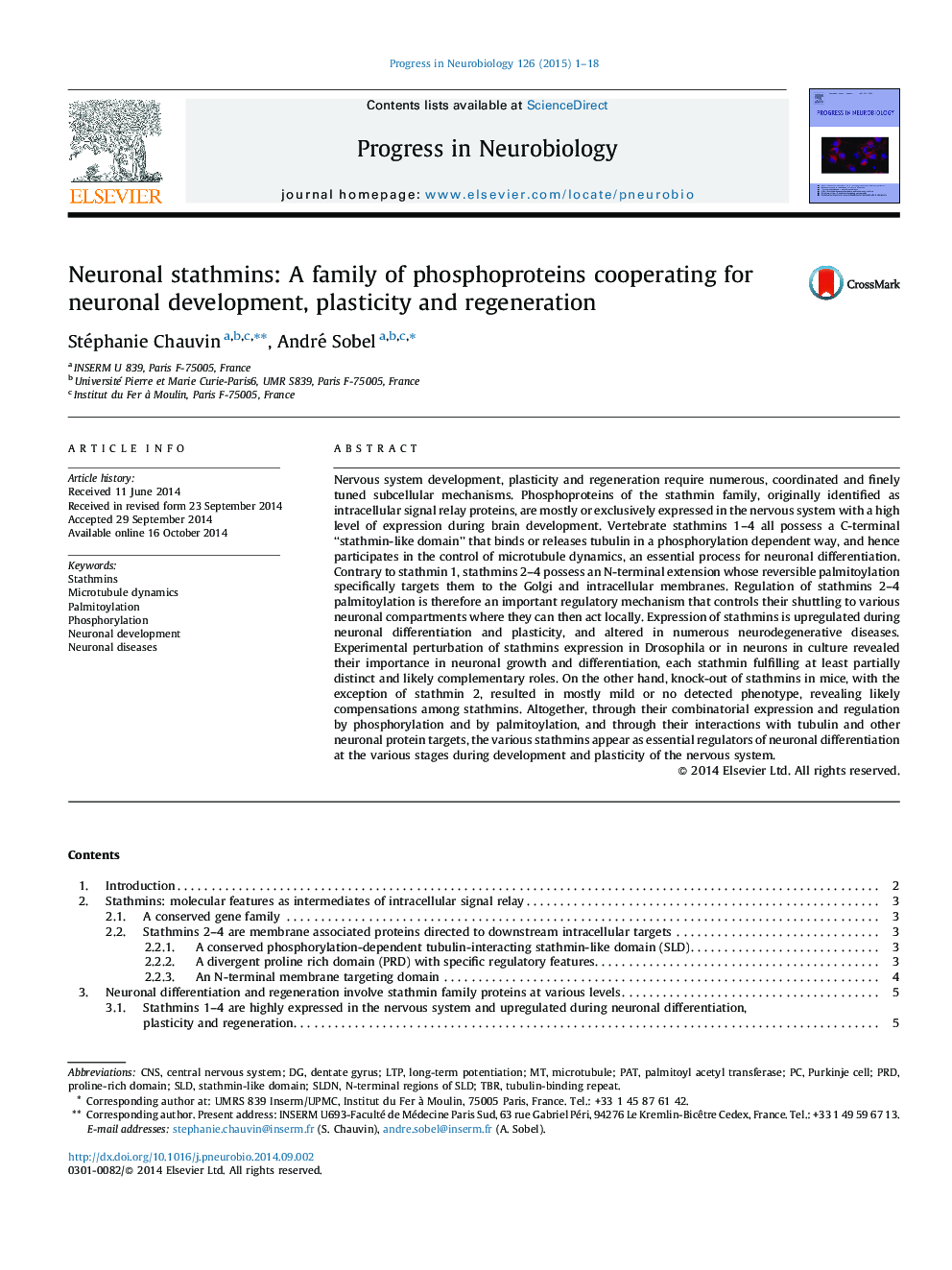| Article ID | Journal | Published Year | Pages | File Type |
|---|---|---|---|---|
| 4353298 | Progress in Neurobiology | 2015 | 18 Pages |
•Stathmins are upregulated during neuronal differentiation and plasticity.•Stathmins are dysregulated in diverse brain and neurodevelopmental disorders.•Stathmins invalidation perturbs neuronal differentiation at various levels.•Stathmins are trafficking and may be regulated and act locally in neuronal processes.•Each stathmin fulfills specific functions in controlling neuronal morphogenesis.
Nervous system development, plasticity and regeneration require numerous, coordinated and finely tuned subcellular mechanisms. Phosphoproteins of the stathmin family, originally identified as intracellular signal relay proteins, are mostly or exclusively expressed in the nervous system with a high level of expression during brain development. Vertebrate stathmins 1–4 all possess a C-terminal “stathmin-like domain” that binds or releases tubulin in a phosphorylation dependent way, and hence participates in the control of microtubule dynamics, an essential process for neuronal differentiation. Contrary to stathmin 1, stathmins 2–4 possess an N-terminal extension whose reversible palmitoylation specifically targets them to the Golgi and intracellular membranes. Regulation of stathmins 2–4 palmitoylation is therefore an important regulatory mechanism that controls their shuttling to various neuronal compartments where they can then act locally. Expression of stathmins is upregulated during neuronal differentiation and plasticity, and altered in numerous neurodegenerative diseases. Experimental perturbation of stathmins expression in Drosophila or in neurons in culture revealed their importance in neuronal growth and differentiation, each stathmin fulfilling at least partially distinct and likely complementary roles. On the other hand, knock-out of stathmins in mice, with the exception of stathmin 2, resulted in mostly mild or no detected phenotype, revealing likely compensations among stathmins. Altogether, through their combinatorial expression and regulation by phosphorylation and by palmitoylation, and through their interactions with tubulin and other neuronal protein targets, the various stathmins appear as essential regulators of neuronal differentiation at the various stages during development and plasticity of the nervous system.
